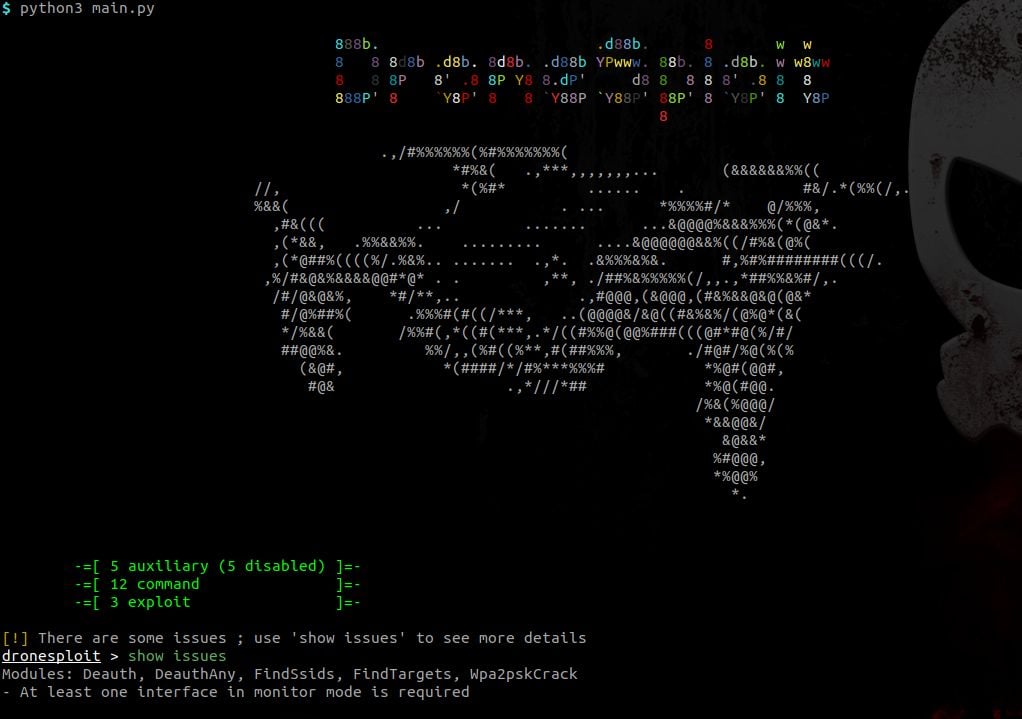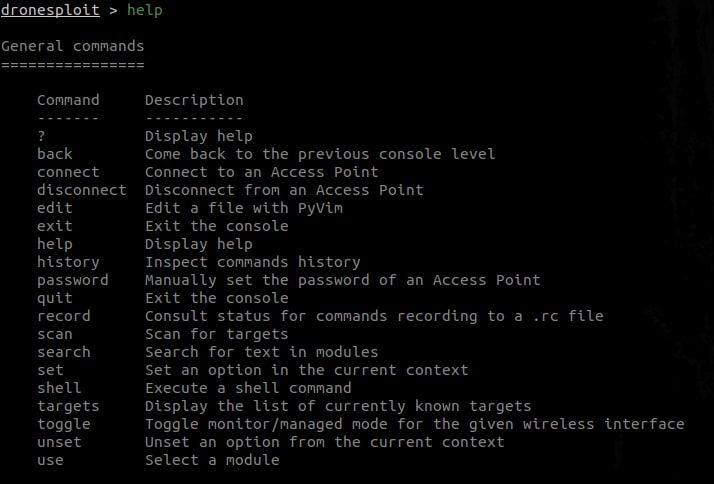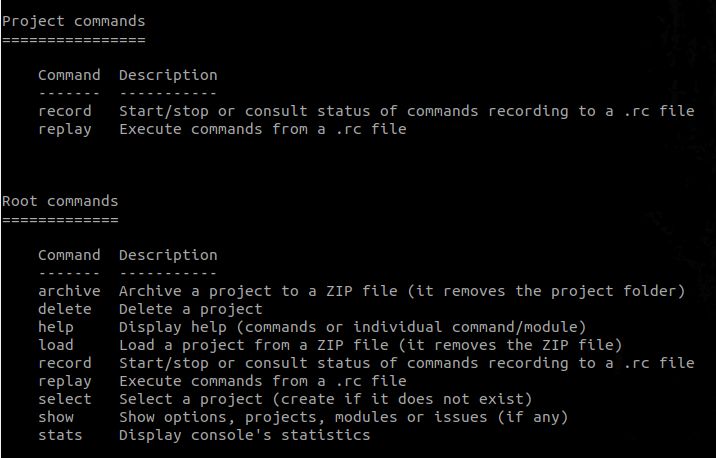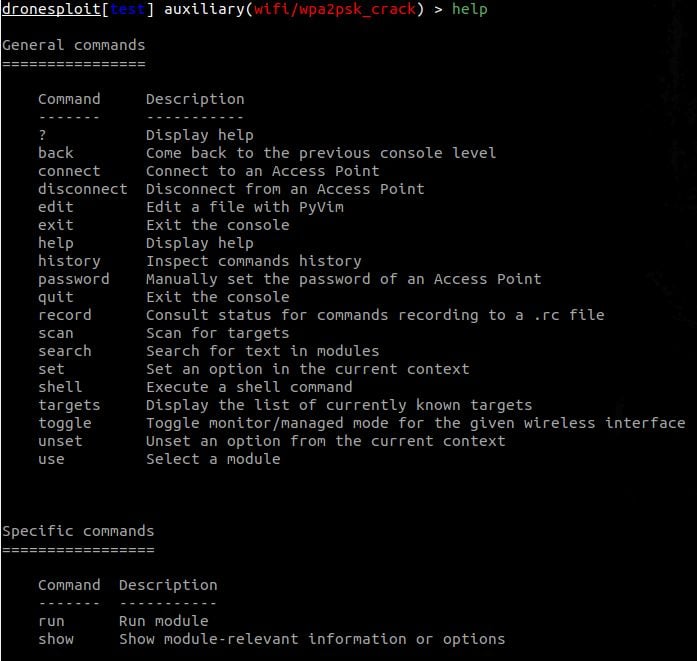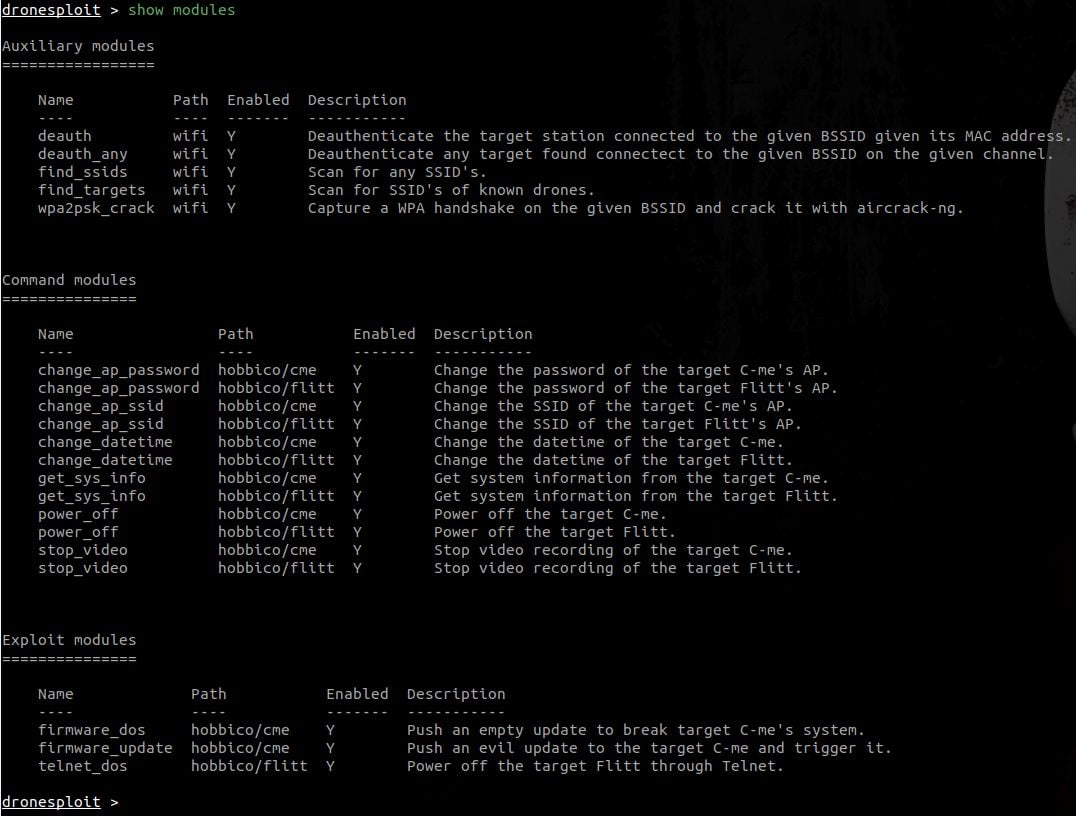Passer can work off a live packet capture or from a pcap file (command line parameter, see examples below). It reports live services and clients, ethernet cards on the lan, dns entries, operating systems, and routers - all passively!
If you're using windows or your paths to the support files don't match mine for some other reason, let me know where they are and I'll be glad to update the script.
Quick notes for getting going with passer, the passive service sniffer. You're responsible for getting permission to sniff.
Installation
Requirements
- Python >=2.4 and <3.0
- Python libraries (see requirements.txt)
- ipaddress
- pytz
- scapy>=2.4.0
Optional (but recommended)
- nmap
- for Ethernet manufacturers and service strings
- ettercap, wireshark, and/or arp-scan
- for more Ethernet manufacturers
- p0f version 2
- for the OS fingerprint file
Ubuntu/Debian and deb-based distros
# Install system dependencies
sudo apt-get install arp-scan ettercap-text-only nmap wireshark
# Install python dependencies
sudo pip install -r requirements.txt
# Prevent Scapy from performing DNS lookups
echo 'noenum = [ Resolve(), TCP_SERVICES, UDP_SERVICES ]' >> ~/.scapy_startup.py
Redhat/CentOS/Fedora and rpm-based distros
# Install system dependencies
sudo yum install arp-scan ettercap nmap wireshark
# Install python dependencies
sudo pip install -r requirements.txt
# Prevent Scapy from performing DNS lookups
echo 'noenum = [ Resolve(), TCP_SERVICES, UDP_SERVICES ]' >> ~/.scapy_startup.py
Docker
You may also use passer within docker. Building is optional as you can also jump straight to the docker run command or the examples which will pull a pre-build docker image from a public repository. You can build the passer image like this:
docker build -t quay.io/activecm/passer .
And then you can run it like this:
docker run --rm -i --init --name=passer --net=host quay.io/activecm/passer
In order to kill passer you can run:
docker stop passer
or press Ctrl-\ (control then backslash) in passer's window.
Examples
Both native and docker equivalent commands are given for each of the following examples. For the docker commands, please use the following bash function which is a wrapper around the docker command with the the additional ability to parse volume mount arguments:
# "c" for "containerized"
function cpasser() {
local docker_args=("--rm" "--interactive" "--init" "--name" "passer" "--net" "host")
local passer_args=()
while [[ $# -gt 0 ]]; do
case $1 in
-v|--volume)
# pop next two arguments off and append to docker args
docker_args+=("$1"); shift
docker_args+=("$1"); shift
;;
-v=*|--volume=*)
# pop next argument off and append to docker args
docker_args+=("$1"); shift
;;
*)
# pop next argument off and append to passer args
passer_args+=("$1"); shift
;;
esac
done
docker run "${docker_args[@]}" quay.io/activecm/passer "${passer_args[@]}"
}
- Sniff live as root
/path/to/passer.py
# or with docker
cpasser
This sniffs from all network interfaces and sends all output lines to your console.
- Sniff live as a non-root user
sudo /path/to/passer.py
or
su - -c '/path/to/passer.py'
- Sniff live as root, but only from one interface
/path/to/passer.py -i IfaceName
# or with docker
cpasser -I IfaceName
Running route should give some live interfaces you might use. This is incompatible with "-r".
- Read packets from a pcap file; no root privileges needed
/path/to/passer.py -r /path/to/packets.pcap
# or with docker
cpasser -v /path/to/packets.pcap:/packets.pcap -r /packets.pcap
This is incompatible with "-i".
- Accept raw pcap data on stdin
cat packetdata.pcap | ./passer.py -r /proc/self/fd/0
zcat packetdata.pcap.gz | ./passer.py -r /proc/self/fd/0
bzcat packetdata.pcap.bz2 | ./passer.py -r /proc/self/fd/0
tcpdump -i eth0 -qtnp -w - | ./passer.py -r /proc/self/fd/0
# or with docker
cat packetdata.pcap | cpasser -r /proc/self/fd/0
# etc...
This lets you capture packets with any tool that can save packets to a pcap file, and later process them with passer on a different system.
- Save output lines to a text file for later processing
/path/to/passer.py -l /path/to/networkinfo.txt
# or with docker
touch /path/to/networkinfo.txt
cpasser -v /path/to/networkinfo.txt.pcap:/networkinfo.txt -l /networkinfo.txt
- Suppress warnings and other debugging info
/path/to/passer.py 2>/dev/null
# or with docker
cpasser 2>/dev/null
- Show help screen
/path/to/passer.py -h
# or with docker
cpasser -h
- Save "odd"/unhandled packets to a pcap file
/path/to/passer.py -u /path/to/oddpackets.pcap
# or with docker
touch /path/to/oddpackets.pcap
cpasser -v /path/to/oddpackets.pcap:/oddpackets.pcap -u /oddpackets.pcap
This is generally intended for the development process; packets saved to this file are ones that need to have signatures written. If you'd like to help improve the program, get in touch with the author, Bill Stearns (william.l.stearns@gmail.com). Contributions of odd packets, descriptions of services, and patches to the program are gratefully accepted.
- Apply a BPF filter to limit which packets are processed This should be as simple as placing the BPF filter in single quotes at the end of the command line. As of version 1.16, the underlying library does not appear to successfully use the supplied filter, but there's a workaround. Use tcpdump to do the filtering, and hand the pared-down set of packets to passer on stdin, like above:
tcpdump -r packets.pcap -w - 'icmp or arp' | ./passer.py -r /proc/self/fd/0
# or with docker
tcpdump -r packets.pcap -w - 'icmp or arp' | cpasser -r /proc/self/fd/0
See the "Sample filters" section, below, for some suggestions of filters to use in either capturing packets in advance or live sniffing.
Troubleshooting
socket.error: (1, 'Operation not permitted')
You're probably trying to sniff live as a non-root user. Either log in as root, use sudo/su, or work with pcap files.
If passer crashes or won't work on your system, send me an email (Bill Stearns, william.l.stearns@gmail.com). It would be very helpful if you could include the error message, if any, and any details about your operating system.
Output format
Passer's output goes to stdout, and if you give the command line parameter -l /path/to/logfile, to that file as well. Here's the format:
| Type |
IPAddr |
Proto |
State |
Optional description (may be empty) |
| 'IP' |
IPaddr |
'IP' |
dead or live |
p0f OS description |
| 'MA' |
IPaddr |
'Ethernet' |
MacAddr |
ManufDescription |
| 'TC' |
IPaddr |
'TCP_'Port |
closed or open |
client description |
| 'TS' |
IPaddr |
'TCP_'Port |
closed or listening |
server description |
| 'UC' |
IPaddr |
'UDP_'Port |
open or closed |
udp client port description |
| 'US' |
IPaddr |
'UDP_'Port |
open or closed |
udp server port description |
| 'DN' |
IPaddr |
'A' or 'PTR' |
hostname |
possible extra info |
| 'RO' |
IPaddr |
'TTLEx' |
router |
possible extra info |
- Column 1: A 2 letter code for the record type
- Column 2: The IP address being characterized.
- Column 3: The protocol involved, or "how do we know this?"
- Column 4: the state of the object being described
- Column 5: additional information about the object
Lines are comma separated for easy loading into a spreadsheet or SQL import. None of the fields should contain commas. There is a sample output file at http://www.stearns.org/passer/passer-sample-log.txt .
Here are some examples of how to get the data you want out of these lines:
- Remove duplicate lines:
cat /var/tmp/passer-log | sort -u | less
- Remove duplicate lines and group all records for a given IP together:
cat /var/tmp/passer-log | sort -t, -k2 -u | less
- Grab just the DNS and Router records:
cat /var/tmp/passer-log | sort -u | egrep '(^DN|^RO)' | less
- See all records for a particular IP address:
cat /var/tmp/passer-log | sort -u | grep ',192\.168\.0\.17,' | less
- See all records for a particular network:
cat /var/tmp/passer-log | sort -u | grep ',192\.168\.' | less
- See all machines that are listing on TCP port 25 (smtp servers):
cat /var/tmp/passer-log | sort -u | grep ',TCP_25,listening,' | less
- Don't display closed ports:
cat /var/tmp/passer-log | sort -u | grep -v ',closed,' | less
- Only display closed ports:
cat /var/tmp/passer-log | sort -u | grep ',closed,' | less
- Show all DNS records in the "google.com" domains:
cat /var/tmp/passer-log | sort -u | grep -i 'google\.com\.,' | less
- Grab all the DNS address records and create a hosts-like file:
/path/to/make-hosts /var/tmp/passer-log | /path/to/mergehosts.pl >/var/tmp/passer-hosts
"make-hosts" and merge-hosts are separate shell and perl scripts at http://www.stearns.org/passer/make-hosts .
This is just a start! Send in your favourite ways to extract items of interest and I'll add them and give you credit.
BPF filters
The individual record types need certain types of packets to give them their raw data. If you want to include or exclude these, use the accompanying filter.
'IP', IPaddr, 'IP', dead or live, p0f OS description
This needs TCP SYN packets:
'tcp[13] & 0x12 = 0x02
'MA', IPaddr, 'Ethernet', MacAddr, ManufDescription
These come from arp replies(*1):
'arp'
'TC', IPaddr, 'TCP_'Port, closed or open, client description
These need TCP SYN/ACK's, FIN's and RST's(*2):
'tcp[13] & 0x07 != 0'
'TS', IPaddr, 'TCP_'Port, closed or listening, server description
We need TCP SYN's, SYN/ACK's, and RST's to see if the port is open or closed:
'tcp[13] & 0x06 != 0'
To come up with a server description string, we also need to see the ACK packets that make up the bulk of the traffic on the wire:
'tcp[13] & 0x17 = 0x10'
If you want both, just grab all TCP traffic:
'tcp'
'UC', IPaddr, 'UDP_'Port, open or closed, udp client port description
Easiest to just hand it all udp ports and ICMP port unreachables:
'udp or icmp[0:2] = 0x0303'
'US', IPaddr, 'UDP_'Port, open or closed, udp server port description
Same as above:
'udp or icmp[0:2] = 0x0303'
'DN', IPaddr, A,AAAA,PTR,CNAME hostname, possible extra info
UDP or TCP port 53 (*3):
'udp src port 53 or tcp src port 53'
'RO', IPaddr, 'TTLEx', router, possible extra info
We identify routers because they're sending Time-To-Live-Exceeded or unreachable messages:
'icmp[0:2] = 0x0B00 or icmp[0] = 0x03'
*1 This grabs arp requests too, but these are ignored.
*2 The filter technically includes SYNs as well, but that's a small amount of extra data
*3 As of version 1.16, only UDP port 53 answers are extracted.
Sample BPF filters
- To drastically reduce the number of packets to be parsed, losing only the tcp server description strings, don't process ACK-only packets:
'not(tcp[13] & 0x17 = 0x10)'
This chops out 90+% of the number and volume of packets to be handled, letting passer keep up with moderate bandwidth links.
- If you're not interested in DNS servers:
'not udp src port 53'
There's quite a bit of work to extract dns records; this may also be a good one to turn off if you're trying to keep up with a fast link.
- If you want to focus on packets to or from a particular machine or network:
'host 1.2.3.4'
'net 1.2'
More info
Questions? Bug reports? Issues? Try william.l.stearns@gmail.com and please include "passer" somewhere in the subject line.
- Home site:
- Github repository:
The post Passer - Passive service locator, a python sniffer that identifies servers, clients, names and more appeared first on Hakin9 - IT Security Magazine.















































